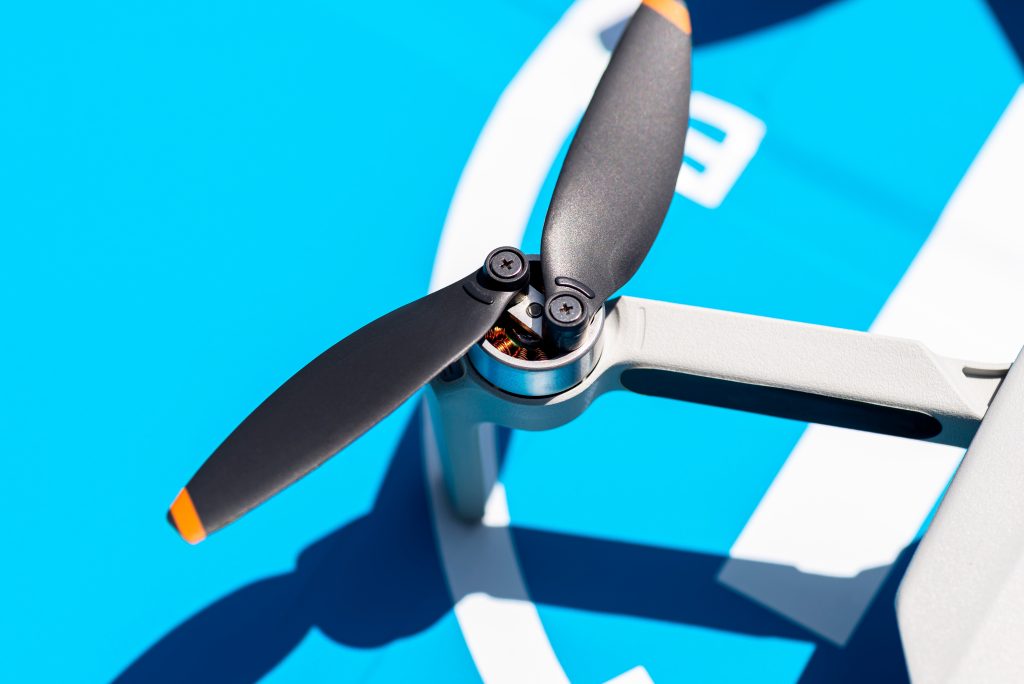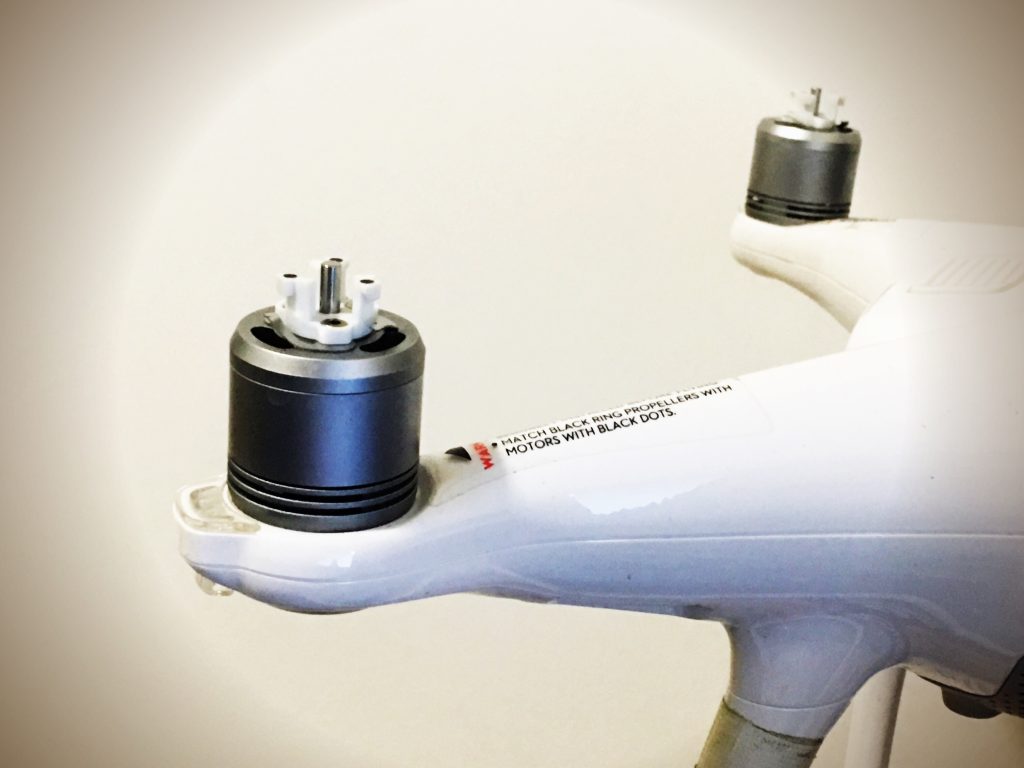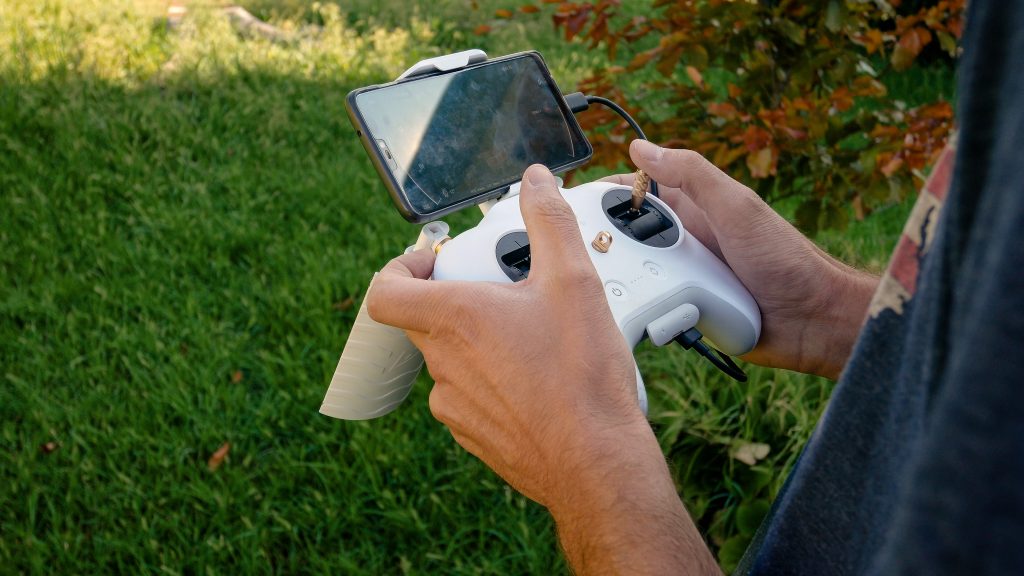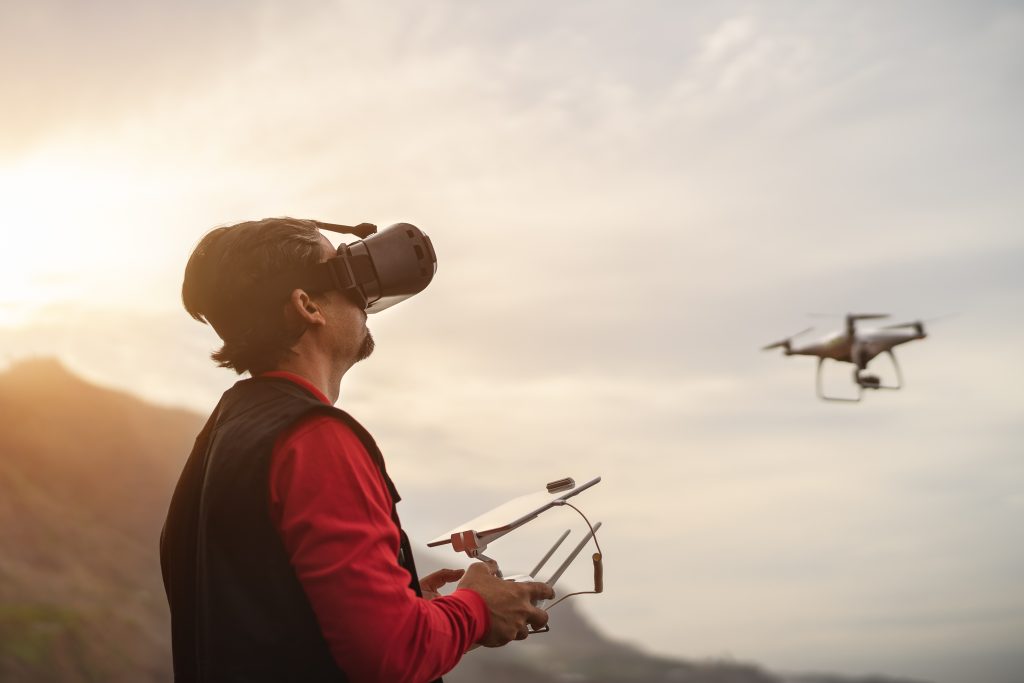Sideway flight is a common issue that many drone enthusiasts face, and it can be quite perplexing. So you might have this question in your mind, “Why Does My Drone Fly Sideways?”. The answer is simple.
There can be several causes of drones flying sideways, including wind conditions, propeller imbalances, weight distribution, motor or propeller damage, misfunctioning joysticks, calibration issues, and drone pilot error.
In this blog post, we will unravel all the possible reasons behind drones sideways, exploring the various reasons that can contribute to this problem.
From wind conditions and propeller imbalances to weight distribution and calibration issues, we will delve into each potential cause and provide you with valuable insights and solutions.
Whether you’re a seasoned pilot or just starting your drone journey, understanding why your drone flies sideways will help you achieve smoother and more controlled flights. So, let’s dive in and unlock the secrets behind this intriguing phenomenon!
Reasons Why Drones Fly Sideways
Reason 1: Wind Conditions
One of the most influential factors affecting drone flight is the wind. Strong gusts or unpredictable winds can create havoc in the skies, causing your drone to drift sideways.
Understanding how wind conditions impact your drone’s flight is essential for maintaining stability and control. Here’s some fixes for dealing with wind-induced sideways flight:
Fix:
Avoid Flying in Windy Conditions
One of the most effective ways to mitigate the impact of wind on your drone’s flight is to avoid flying in windy conditions altogether.
Check the weather forecast before planning your normal or a fpv drone flight, and refrain from flying on days when strong winds are expected.
If you find yourself in a situation where wind conditions change suddenly, it’s best not to takeoff your drone.
Monitor Wind Conditions
When you do decide to fly, it’s essential to continuously monitor the wind conditions during your flight. Wind speed and direction can change at different altitudes, so be attentive to any signs of gusts or turbulence. Observing the movement of trees, flags, or other objects in the vicinity can provide valuable insights into wind patterns.
Adjust Flight Strategy
If you encounter windy conditions while flying, it’s crucial to adjust your flight strategy accordingly.
Fly in Sheltered Areas
If possible, choose sheltered areas for your drone flights. Seek out locations with natural windbreaks, such as buildings, trees, or geographical features, that can provide some protection against strong winds. Flying in these sheltered areas can help mitigate the impact of wind on your drone’s flight stability.
By avoiding flying in windy conditions, continuously monitoring wind conditions during your flight, adjusting your flight strategy, and choosing sheltered areas, you can significantly reduce the occurrence of sideways flights caused by the powerful forces of the wind.
Reason 2: Imbalance in Propeller Speeds

Another common cause of sideways flight is an imbalance in propeller speeds. If one or more propellers are spinning faster or slower than the rest, it can disrupt the drone’s balance and result in unwanted lateral movement. Here’s a fix for addressing propeller speed imbalances:
Fix: Balancing Propeller Speeds
To resolve propeller speed imbalances, you’ll need to conduct a careful inspection of your drone’s propellers and motors. Start by visually examining each propeller for any signs of damage or deformation. Replace any damaged propellers to ensure even thrust distribution.
If the issue persists, use a propeller balancing tool to identify and correct speed variations. By achieving a balanced propeller system, you can eliminate one of the primary causes of sideways flight.
Reason 3: Uneven Distribution of Weight
The distribution of weight across your drone plays a vital role in maintaining stability and level of flight. An uneven distribution of weight can disrupt the drone’s balance, causing it to lean to one side and fly sideways.
Fix: Check and Adjust Weight Distribution
The first step is to thoroughly inspect your drone’s payload and accessories.
Check if any additional items are not securely attached or if they are positioned in a way that creates an imbalance. Make sure the payload and accessories are evenly distributed across the drone’s frame.
Next, pay close attention to the battery placement. Batteries can significantly affect weight distribution, so ensure they are properly positioned and secured.
If your drone allows, consider using a battery mounting plate or battery straps to secure the batteries in place, preventing any shifting during flight.
To verify weight distribution, you can perform a simple test. With the drone powered off, place it on a level surface and observe if it remains level. If the drone is tilting to one side, it indicates an uneven distribution of weight. In such cases, adjust the payload, accessories, or battery placement until the drone remains level.
For drones with adjustable camera gimbals, be mindful of their positioning. Improperly balanced gimbals can also contribute to weight distribution issues. Consult your drone’s user manual for guidance on properly balancing the camera gimbal to ensure even weight distribution.
In situations where additional accessories or payloads are necessary, such as high-quality cameras or specialized equipment, consider consulting the drone manufacturer or relevant online forums for recommendations on maintaining proper weight distribution.
They can provide insights into specific balancing techniques or additional accessories that can help achieve optimal balance.
By meticulously inspecting and adjusting the weight distribution on your drone, you can restore balance and minimize the chances of a tilt flight. Remember, a well-balanced drone is essential for stable and controlled flights.
Reason 4: Motor or Propeller Damage
Damage to the motors or propellers can significantly impact your drone’s flight performance, leading to unstable flight patterns, including sideways movement.

Fix: Inspect and Replace Damaged Components
Regular inspection is key to identifying any signs of motor or propeller damage.
Start by visually examining each motor and propeller for cracks, chips, or any other visible abnormalities. Check for signs of wear and tear, such as bent propeller blades or loose motor mounts.
If you identify any damage, the appropriate fix is to replace the damaged component. Contact the drone manufacturer or a reputable supplier to obtain genuine replacement parts.
Follow the manufacturer’s guidelines and instructions for safely removing and installing the new motor or propeller.
It’s important to note that propellers should be replaced in pairs or sets to ensure balanced performance. This means replacing both clockwise and counterclockwise rotating propellers simultaneously.
Additionally, it is a good practice to regularly inspect and tighten any loose screws or fasteners that secure the motors and propellers.
Loose connections can negatively impact the performance and stability of the drone.
By diligently inspecting and promptly replacing any damaged motors or propellers, you will ensure that your drone operates optimally, minimizing the chances of tilt flight caused by compromised components.
Reason 5: Misfunctioning Joysticks

The remote controller’s joysticks the primary means of controlling your drone’s movement. However, if the joysticks or the flight controller is misfunctioning, they can send inaccurate commands to the drone, leading to tilting the drone. Let’s delve into the fix for this issue:
Fix: Calibrate or Replace the Joysticks
Start by calibrating the joysticks following the instructions provided by your drone manufacturer. Calibration ensures that the joysticks have a neutral starting position and respond accurately to your inputs.
If calibration doesn’t resolve the issue, consider replacing the joysticks.
Contact the manufacturer or consult the user manual for guidance on obtaining and installing compatible replacement joysticks.
A properly functioning remote controller will ensure precise control over your drone’s movements and minimize the chances of sideways flight caused by input errors.
Reason 6: Calibration Issues
Drone sensors play a crucial role in maintaining stable flight and accurate positioning. However, if these sensors are not calibrated correctly, they can cause your drone to drift or fly sideways.
Fix: Perform Sensor Calibration
Sensor calibration is a crucial step to ensure accurate readings and reliable flight performance.
Consult your drone’s user manual or the manufacturer’s website for specific instructions on how to calibrate the sensors.
Typically, the process involves placing the drone on a level surface and following a series of steps to calibrate the accelerometer, gyroscope, and compass.
Mostly cheaper drones have this kind of problem. Completing the calibration procedure as recommended by the manufacturer will ensure that your drone’s sensors are accurately calibrated, minimizing the chances of sideways flight due to sensor errors.
Reason 7: Pilot Error and Lack of Practice
While drones are equipped with advanced technology and flight assistance features, they still require skilled pilots behind the controls.

Inexperienced pilots or those who lack practice may inadvertently make errors that result in their drones flying sideways. Let’s delve into the fix for this issue:
Fix: Practice and Familiarize Yourself with Controls
The first step in addressing pilot error and lack of practice is dedicating time to practice flying your drone. Find an open and safe space where you can hone your piloting skills.
Start with basic maneuvers such as hovering, forward flight, and turns. Gradually progress to more advanced maneuvers and experiment with different flight modes to become comfortable with the drone’s controls and behavior.
Additionally, take advantage of flight simulator software or virtual reality drone experiences, which provide a safe environment for practicing maneuvers and developing muscle memory without the risk of damaging your drone.
The more you practice and familiarize yourself with the controls, the better your piloting skills will become, reducing the likelihood of sideways flight due to drone pilot errors.
Consider enrolling in drone piloting courses or joining local drone flying clubs. These resources provide valuable guidance, feedback, and the opportunity to learn from experienced pilots.
Engaging in discussions with other drone enthusiasts can also help you gain insights and learn from their experiences, further enhancing your piloting abilities.
Furthermore, always stay updated with the latest drone regulations and safety guidelines issued by aviation authorities in your region.
Understanding and adhering to these guidelines will contribute to safe and responsible flying practices, reducing the risk of errors that could lead to sideways flight.
FAQ
Q: Can I fly my drone in windy conditions?
A: It is generally recommended to avoid flying your drone in windy conditions, especially if the wind speed exceeds the drone’s recommended limit. Flying in high winds can lead to unstable flight and increase the risk of drone crashes.
Q: Can sideways flight be influenced by the drone’s battery health or voltage level?
A: Yes, a low battery voltage or a deteriorating battery can impact the drone’s overall performance and stability. It is important to monitor battery health and voltage levels to prevent potential issues, including sideways flight.
Q: Can a misaligned compass or GPS system lead to a sideways flight?
A: Yes, a misaligned compass or GPS signal can affect the drone’s navigation and positioning accuracy, potentially resulting in sideways flight. Proper calibration of these systems is necessary to ensure accurate flight control.
Conclusion
In this blog post, we explored several causes of sideways flight, including wind conditions, propeller imbalances, weight distribution, motor or propeller damage, misfunctioning joysticks, calibration issues, and drone pilot error. We provided practical solutions for each of these factors to help you regain control and achieve stable, controlled flights with your drone.
By implementing these fixes and understanding the importance of proper maintenance, calibration, and piloting skills, you can minimize the occurrence of sideways flights and unlock the full potential of your drone.
The key to enjoyable and safe drone flights lies in knowledge, practice, and attention to detail. Stay updated with the latest guidelines, keep practicing, and continue to explore the wonderful world of aerial drone photography and videography with confidence!
Happy flying!

